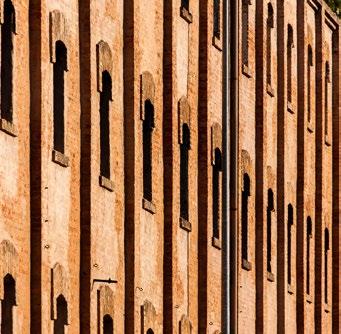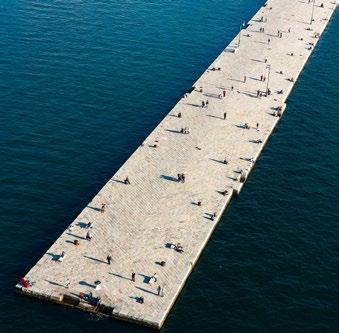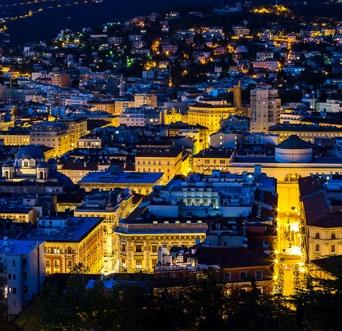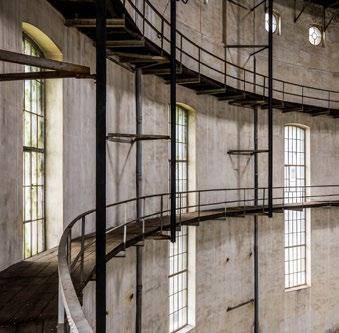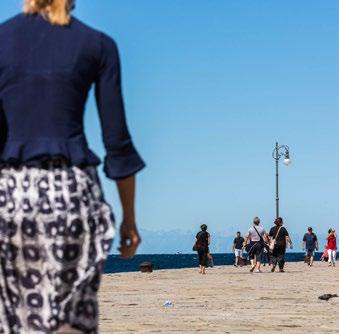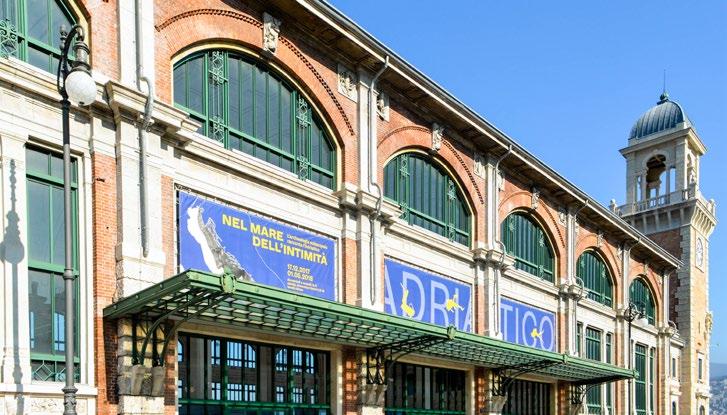
2 minute read
Lo stato dell’arte nel Salone degli Incanti — The
from number 1
Un salone destinato all’incanto
“Rimettere la città al centro di un contesto europeo e mediterraneo, anche con il valore nuovo che si può dare a uno dei luoghi più importanti e suggestivi del fronte mare”: è l’obiettivo del Salone degli Incanti di Trieste, sintetizzato dall’assessore comunale alla cultura, Giorgio Rossi. La ex Pescheria, dove per decenni si sono svolti gli “incanti” per l’aggiudicazione delle partite di pesce a pochi metri dal mare, “è destinata ora a incantare turisti e triestini” con la sua incredibile struttura liberty e le mostre che ospita nei suoi grandi saloni, dalle “Stanze segrete” di Vittorio Sgarbi, all’archeologia del mare, a Imago Mundi. Sarà una mostra sobria, una sorta di catalogo dello stato dell’arte mondiale destinato anche alle famiglie e ai più giovani. “Luciano Benetton –spiega Rossi– ci teneva particolarmente a portare questo progetto a Trieste e siamo molto felici che la città possa ospitare così tanta bellezza”, conclude Rossi. [ng]
Advertisement
A hall destined for enchantments
“Bringing the city back to its European and Mediterranean dimension, by bestowing a new meaning on one of its most important and fascinating waterfront buildings”: with these words Giorgio Rossi, city counsellor for culture, summarises the goal of the Salone degli Incanti of Trieste (lit. The Hall of Enchantments). The ex Pescheria has hosted a very different “enchantment” in the past decades: it used to be the city’s fish market, where buyers competed over the best fish batches, with the sea only a few feet away. Today the Salone is “destined to enchant tourists and locals alike” with its spectacular liberty-style structure and its grand halls hosting prestigious exhibits: Vittorio Sgarbi’s “Secret chambers”, Sea Archaeology, and the latest Imago Mundi. Imago Mundi is going to be a sober event, a sort of universal catalogue of world art for the general public. Rossi: “Luciano Benetton insisted that this project be brought to Trieste and we are delighted to see our city host so much beauty”.
[ng]
Le cento magie e le mille anime di Trieste — A hundred spells and a thousand souls
Un cubo di Rubik che “muta le facce a seconda di come il tempo e la storia le combinano”: è la città che Pietro Spirito, giornalista e scrittore, e Massimo Crivellari, fotografo, raccontano nel libro “Trieste – Una città e la sua anima” con un’avvertenza: “Ci vuole molta abilità, o molta fortuna, a trovare la giusta mossa per far combaciare i colori” di questa città dalle cento magie e dalle mille anime.
Il racconto di Spirito e le foto di Crivellari non suggeriscono un itinerario turistico; attraversano, invece, trasversalmente tempo e spazi di Trieste, intrecciando luoghi e atmosfere, storia e attualità, la concretezza dei mercati e i refoli della bora. Raccontano il Castello di Miramare e le costruzioni di Rozzol Melara, la città delle Chiese e quella dei collezionisti, la movida e le osmize, il Molo Audace e la Risiera di San Sabba. Ricostruiscono così, fra storia e suggestioni, lo strano destino di questa città, “legato a un pendolo che oscilla tra passato e futuro, con brevi passaggi nel presente”. [cdl]
Rubik’s cube “changes its faces according to how time and history combines them”: this is the city that Pietro Spirito, journalist and writer, and Massimo Crivellari, photographer, describe in the book “Trieste – Una città e la sua anima” (lit. Trieste – a City and its Soul) with a specific warning: “It takes skills or a good bit of luck to find the right move and get all colours to match”. They are the colours of this city with a hundred magic spells and a hundred souls.
The book is not meant to be a travel guide; Spirito’s words and Crivellari’s images move through time and space crosswise, where places, atmosphere, history and modernity, markets and bora gusts intertwine. They talk about Miramare Castle and Rozzol Melara buildings, the city of Churches and collectors, nightlife and osmize, the Molo Audace and the Risiera of San Sabba. History and charm have shaped this city’s strange fate “linked to a pendulum swinging between the past and the future, only briefly touching the present”. [cdl]

